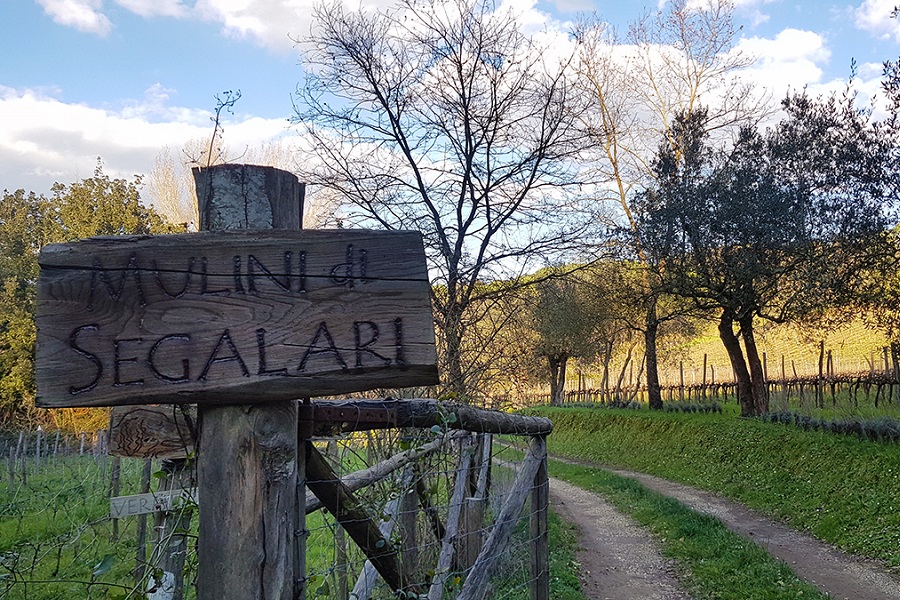by Antonio Donnangelo
Share

The Company
The Mulini di Segalari farm was established in 2002 out of a shared passion for viticulture by
Marina Tinacci Mannelli
, an architect, and her husband, oenologist
Emilio Monechi.
The company is located in
Castagneto Carducci (LI)
, a few kilometers from the center of Bolgheri. It is an unspoiled, wild place characterized by the presence of forests and a stream, which runs along the farm.
The red grape varieties present on the estate are classics of the
DOC Bolgheri:
Cabernet Sauvignon and Merlot
for the most part,
Petit Verdot, Syrah
, but also
Sangiovese, Ciliegiolo and Pugnitello.
The white grape varieties are.
Vermentino, Manzoni Bianco and Viognier.
The company has always remained true to its connection with nature, in fact it is
biodynamics
since 2017,
organic
since its inception and over the years has been taking advantage of the benefits that technology can offer even small businesses.
1. How did you find out about Agrobit?
I met Niccolò (COO) and Simone (CEO/CTO) at a conference at the University of Pisa where they were giving a talk. Having understood their activity, I became interested. At the end of their intervention, I contacted them and made an appointment at the company to see if it was possible to start a collaboration.
2. What were the needs before you learned about Agrobit and what services did you choose?
My request was to have an overall view of our vineyards, deeper and more alternative than the single view that one has by doing analyses from the ground up. I liked the drone idea because it was a new point of view and would allow us to assess our vineyards according to a vigor map to understand the lower or higher fertility of the vines.
3. What were your initial expectations?
My idea was to test the correspondence between a plant’s higher vigor and its greater abundance of clusters compared to areas with low vigor and therefore fewer clusters. The goal was to proceed with a selective grape harvest each year.
4. What benefits have you gained from using Agrobit services?
The thing we were most interested in with the drone was vegetation control, clearly aimed at harvest optimization. For now with Agrobit we have developed this aspect because harvesting according to the different vigor zones leads me to have already at harvest time a different quality of wines based on objective and not subjective parameters.
5. Are you satisfied with how our team handled your requests?
I am absolutely satisfied and am very keen to develop more and more collaboration. Although we are a small company and have limitations, we are also absolutely open to experimentation. For example, we are currently involved in the iVine project (PSR Tuscany Region – submeasure 16.2), where among other things Agrobit itself is the leader, in which we are aiming at the use of variable rate to be able to modulate phytosanitary treatments according to the greater or lesser vigor of the plants.
6. What would you tell someone who is considering using our services based on your personal experience?
In my experience, I can say that the use of drones and the help and collaboration with Agrobit is absolutely much more accessible, practical and simple than what a farmer can imagine. The drone is a means to be able to make informed data-driven agronomic decisions objectively, but in general, the use of the smartphone (Ed. note, see app iAgro) is a much more practical, immediate and accessible solution than what we generally envision as cost and time commitment.
7. What suggestions or advice would you have for those who want to get the most out of the Agrobit services you have used?
I would propose to open up, to try experimenting, to request demonstrations and quotes for initial approaches to try to understand how this kind of technology can really help effectively, not only at harvest time, in the case of viticulture, but also at other times and other crops, such as for irrigation, fertilization, treatments, etc…. . I am sure that companies need to be less timid and a little more courageous.
8. What are the future developments for Segalari Mills?
We already adopt precision viticulture practices, but soon I would like to be able to apply the same techniques to olive growing, which is another secondary production of ours. I will soon rely on Agrobit to check together how to open this new page.
